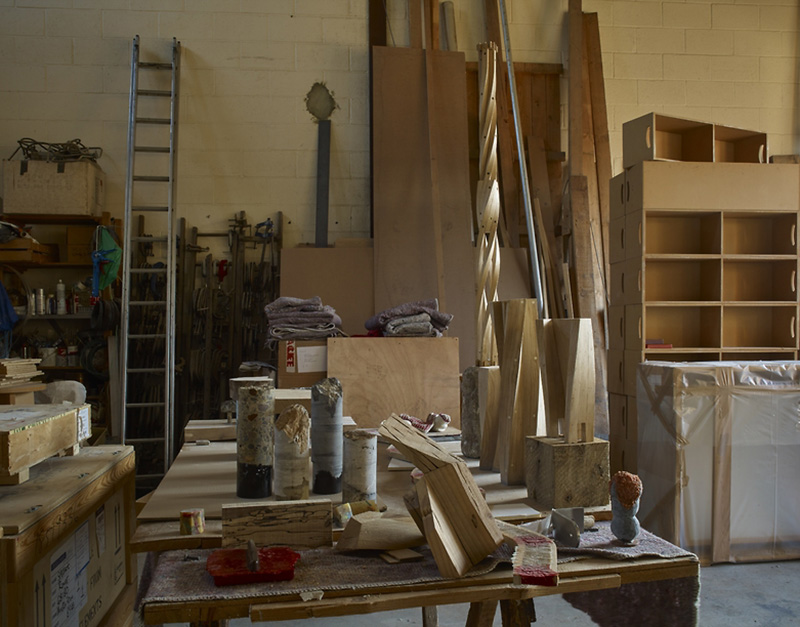ART-PRESENTATION: Richard Deacon-Thirty Pieces
 Born in Bangor, Wales, in 1949, Richard Deacon has emerged as one of Britain’s most celebrated sculptors. From an early stage in his career, Richard Deacon experimented with different media and forms of expression. Drawing and writing, for instance in documenting performance, are an integral part of his practice. In his sculptural work, he uses a wide range of materials, including laminated plywood, concrete, stainless steel, and clay.
Born in Bangor, Wales, in 1949, Richard Deacon has emerged as one of Britain’s most celebrated sculptors. From an early stage in his career, Richard Deacon experimented with different media and forms of expression. Drawing and writing, for instance in documenting performance, are an integral part of his practice. In his sculptural work, he uses a wide range of materials, including laminated plywood, concrete, stainless steel, and clay.
By Dimitris Lempesis
Photo: Galerie Thaddaeus Ropac Archive
Richard Deacon’s structures noticeably emerge from a deeply held interest in the nature of these materials themselves, as well as the way their form may relate to human association or sensory experience. Often seeming abstract at first glance, the sculptures’ forms billow, churn and ripple, approximating the anatomical, suggesting recognizable or organic shapes to the viewer without ever collapsing completely into the already familiar. In Richard Deacon’s solo exhibition “Thirty Pieces” at Galerie Thaddaeus Ropac in Paris, 30 works are on presentation, 20 new sculptures in various materials and 10 works on paper. In the past Deacon has always tended to use the floor as surface, but in this exhibition are installed on tables of two different heights. As the artist says “I think showing what you do is implicit in the act of making art, and there are models for doing it. The exhibition is currently one of the strongest models around. For artists, to make an exhibition is to a greater or lesser extent a continuation of what happens in the studio”. Scattered in sub-groups, the sculptures can be apprehended either autonomously or as a whole. Although there is no specific reason for the artist to decide to show thirty pieces, the title unfolds different associations. It follows a minimal gesture of self-referencing, while also carrying other connotations. It is notably evocative of the thirty pieces of silver Judas was given to betray Jesus, as reported in the Gospel of Matthew, an episode represented many times in religious paintings. Throughout his career Deacon has placed as much an emphasis on language as he has on materiality. This reflects a deep-rooted interest that stems from his reading of poetic, and philosophical texts amongst others. Drawing has a twofold function for Deacon, alongside sketches and studies for sculptures, the artist also produced drawings independent of sculptural projects from early on. The formal scope of these autonomous drawings is substantial, ranging from early small-scale collages and large-format pencil drawings to entire series in recent years. What connects Deacon’s multifaceted works on paper with his plastic oeuvre is the artist’s fundamental exploration of the reciprocal effects of construction and free form, of surface and space.
Info: Galerie Thaddaeus Ropac, 7 Rue Debelleyme, Paris, Duration: 10/3-29/4/17, Days & Hours: Tue-Sat 10:00-19:00, www.ropac.net
